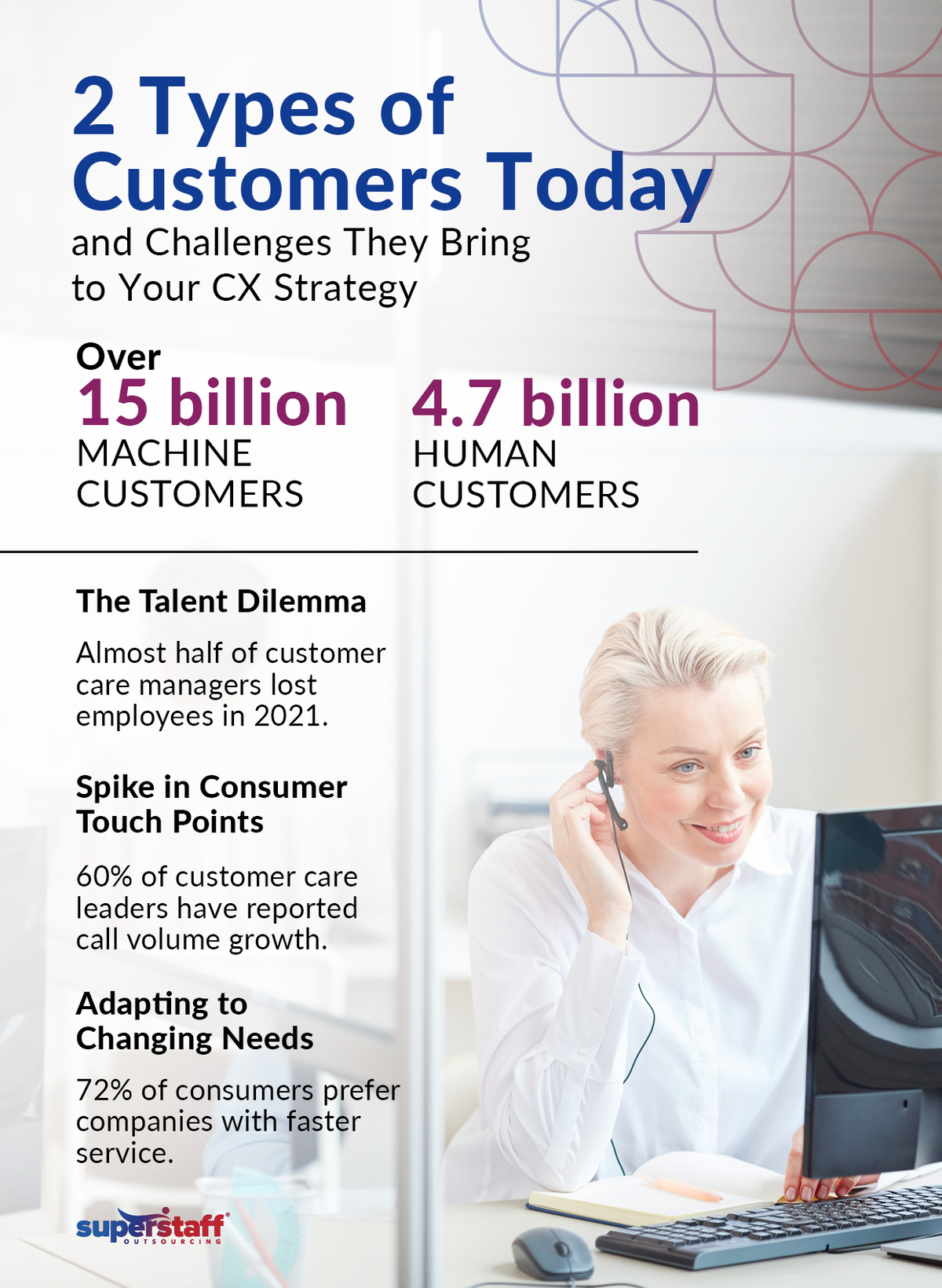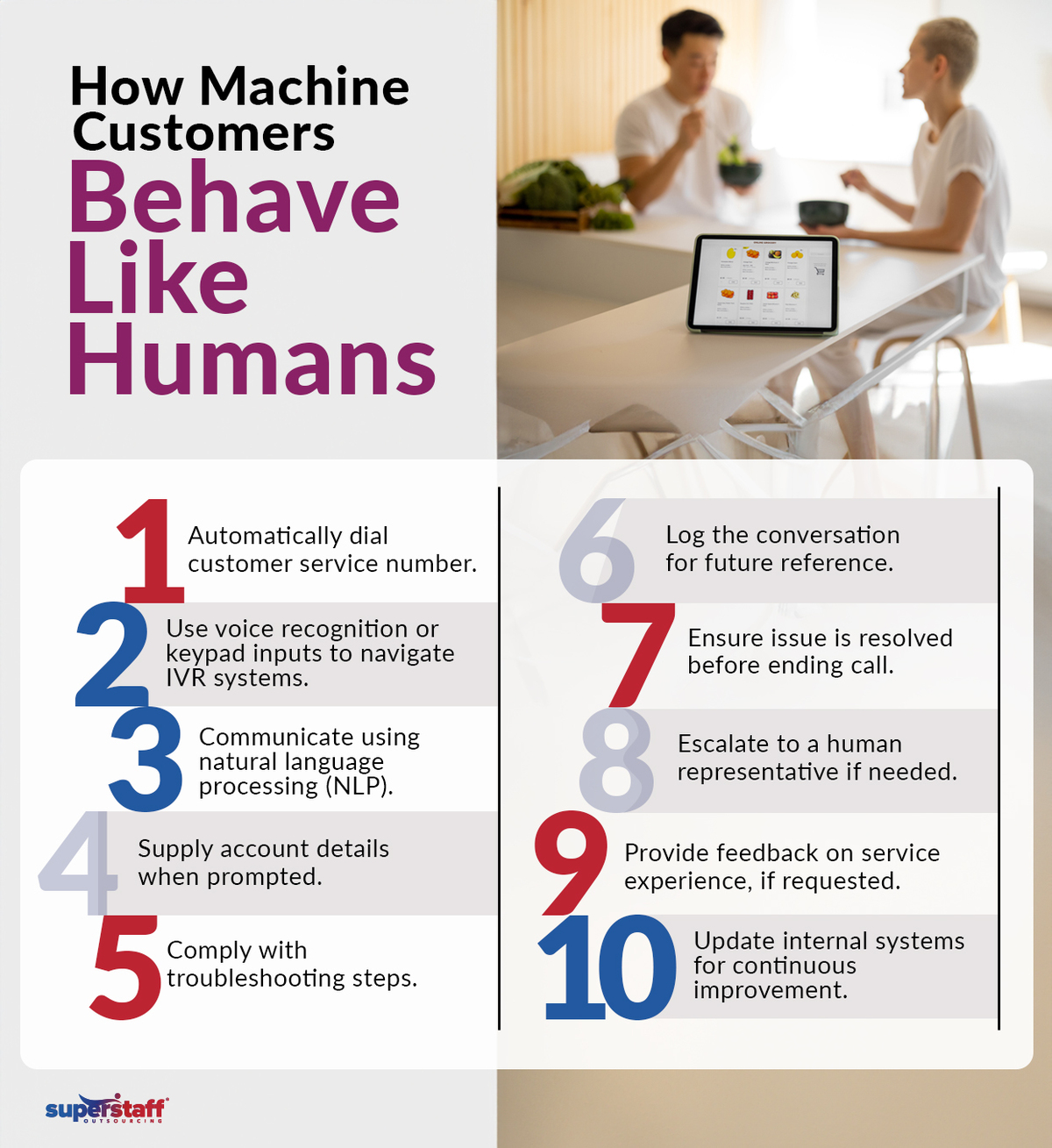
Google Search Labs is introducing a new feature, “Talk to a Live Representative,” designed to simplify how customers contact customer service. When they search for your customer service numbers, for example, they will see a convenient prompt to ‘Talk to a Live Representative.’
This feature allows Google to handle the call, wait on hold, and then connect customers once a representative is available, relieving them of the usual wait time and hassle. With this new feature, your customers can specify the reason for their call, provide their phone number, and even receive SMS updates on the estimated wait time. It is already available for various businesses, including airlines, telecommunications companies, retail stores, service providers, and insurance companies, allowing your customers to choose the most convenient way to connect with your customer service.
This innovative addition to Google’s search functionality has the potential to reshape how customers interact with your business. But what does it truly reveal about the evolving needs and expectations of today’s customers?
The Bigger Picture: You Have 2 Types of Customers Today
#1 Machine Customers Are Growing by Trillions
Machine customers are no longer just a concept of the distant future — they are here and multiplying. These digital entities operate within interconnected ecosystems, making autonomous decisions and transactions. The implications are enormous, with trillions of dollars expected to flow into the hands of these nonhuman entities.
Google’s “Talk to a Live Representative” feature is a step towards catering to this new demographic. Today, machine customers have more channels, from smartphones and smart speakers to connected devices.
By 2030, a significant portion of consumer purchases and business transactions will likely be handled by machines.
Phases of Evolution
- Bound Customers: Machines follow preset rules set by humans (today).
- Adaptable Customers: AI technology makes decisions with minimal human intervention (expected by 2026).
- Autonomous Customers: Machines act independently with high discretion (expected by 2036).
How Machine Customers Are Different from Human Customers
Machines approach decision-making differently from humans. They are transparent in their logic, objectively process vast amounts of data, and prioritize efficiency over emotion. As a result, companies must adapt their corporate strategies, business models, and operational practices to capitalize on this new market.
Sales, marketing, and data analytics functions will undergo significant transformations, shifting towards programming, data-driven experiences, and high-quality intelligence to support interactions with machine customers.
Machine customers will account for a staggering amount of revenue by 2030. Gartner reports that CEOs believe up to 20% of their companies’ revenue will come from machine customers by that year. Additionally, Gartner projects that within two years, more than 15 billion connected products will have the potential to behave as customers.
Unlike their human counterparts, machine customers bring unique traits and advantages that make them valuable additions — or even alternatives — in the marketplace. Let’s explore what separates machine customers and why they are becoming increasingly significant.
- Efficiency and Methodical Approach: Unlike human customers, who can be inconsistent and forgetful, Machine Customers excel in efficiency and effectiveness. They are meticulous researchers who apply logic and reason to make informed purchasing decisions. Their observant nature ensures they buy what’s necessary while avoiding unnecessary or impulsive purchases.
- Emotionless Decision-making: Machines are not swayed by emotional factors or sensory manipulation. They remain focused on completing tasks, unaffected by music, scents, or psychological tactics employed in traditional sales environments like stores, casinos, or grocery stores.
- Utilization of Vast Data: While humans can only process a limited amount of data, machines can access and analyze massive datasets. Leveraging advanced technologies like large language models, they can make decisions based on unfathomable information.
- Mitigation of Decision-Making Challenges: Machines mitigate everyday decision-making challenges humans face, such as the paradox of choice, decoy effect, and decision fatigue. They are not susceptible to manipulative pricing strategies or nudges towards suboptimal choices, resulting in more rational decision-making processes.
Machine Customers ultimately offer a more systematic, data-driven, and objective approach to purchasing, free from the cognitive biases and limitations that often affect human consumers. As technology advances, their role in the marketplace is poised to expand, offering businesses new opportunities for efficiency and optimization.
#2 Human Customers Still Prefer to Talk to a Live Representative But Hate…
Waiting in Line
The shortest average waiting time for contact centers is 10 minutes and seven seconds. As each minute passes, the uncertainty looms larger. The frustration of waiting endlessly in a call queue, uncertain when — or if — they’ll ever connect with a live representative. Will you ever connect with a live representative? Or are you condemned to an endless cycle of holding music and automated messages? Every passing second feels like an eternity, exacerbating the sense of urgency and frustration.
For busy professionals and individuals with urgent issues, time is of the essence. Every minute customers spend on hold is lost, impacting productivity and adding unnecessary stress. The lack of transparency regarding waiting promptly compounds the frustration, leaving customers feeling neglected and undervalued by the businesses they rely on for support.
In an age of convenience and efficiency, waiting in line is a significant obstacle to delivering exceptional customer service. Businesses must recognize the toll that long wait times take on their customers and implement strategies to minimize wait times and maximize transparency. By prioritizing the human touch and providing timely assistance, businesses can cultivate trust, loyalty, and satisfaction among their customer base.
Endless Call Menus
Call menus, intended to streamline the customer service process by categorizing inquiries and directing callers to the appropriate department, often have the opposite effect. Press 1 for billing inquiries, 2 for technical support, 3 for account changes — the list goes on. Customers navigate through a maze of options, feeling trapped in a labyrinth with no clear path to resolution.
Instead of simplifying the process, it creates confusion and frustration. Customers find themselves lost in a sea of options, unsure which path will lead to the assistance they need.
However, the complexity of call menus can quickly become overwhelming and disorienting. What starts as a simple inquiry soon escalates into a frustrating ordeal as customers struggle to navigate the convoluted menu system. Each wrong turn prolongs the process, further exacerbating their frustration and eroding their patience.
Automated Calls
While automated systems aim to streamline the customer service process, they sometimes fail to meet consumers’ diverse needs. They may offer efficiency and convenience in the short term, but in reality, they leave customers feeling disconnected and misunderstood.
The prerecorded messages lack the empathy and understanding only a human representative can provide. They fail to recognize human language and emotional nuances, leaving customers frustrated and dissatisfied with their experience. These obstacles can turn a simple inquiry into a daunting ordeal for human customers, driving them away from businesses that fail to prioritize a seamless and human-centric customer service experience.

The Challenge: Call Volumes Double, But Customer Care Talent Are Scarce
In a world where 4.7 billion consumers drive the global market, exceptional customer service can be the linchpin of your success.
Let’s say a client needs to resolve an urgent issue with their insurance policy. They call the customer service number, only to be greeted by a robotic voice instructing them to press various numbers for different options. After navigating through a maze of automated menus, they finally reach a hold line, where they wait and wait. Frustration builds as the minutes tick by, making them increasingly impatient. They want to speak with a knowledgeable, empathetic human representative who can quickly address their concerns.
Like this particular person, many human customers prefer the personal touch and efficiency of speaking directly with a real person. Yet, traditional customer service systems’ time-consuming and impersonal aspects deter them. This creates a significant challenge for businesses striving to provide exceptional customer experiences while balancing operational efficiency.
Customer care has emerged as a critical battleground for companies striving to differentiate themselves and build lasting customer relationships. However, as call volumes surge and customer service trends evolve, businesses face challenges that threaten to undermine their efforts to deliver exceptional service.
The Talent Dilemma
One of the most pressing challenges facing customer care leaders today is the shortage of qualified talent. With call volumes doubling and customer interactions becoming increasingly complex, the demand for skilled customer service professionals has never been higher. Yet, finding and retaining talent has become increasingly complex, with nearly half of managers reporting increased employee attrition over the past year.
Spike in Consumer Touch Points
As businesses grapple with the talent shortage, they also contend with a dramatic increase in consumer touch points.
Roughly 60% of customer care leaders have reported a growth in total calls, and they expect this trend to continue. Additionally, McKinsey reported that 40% of consumers cite “multiple options for communicating” as the most essential feature of a company’s customer service department. This spike in consumer touch points presents a significant challenge for organizations, as they must find ways to scale their operations to meet the growing demand without sacrificing quality or customer satisfaction.
Adapting to Changing Needs
In addition to contending with higher call volumes and a talent shortage, businesses must grapple with evolving customer expectations. Consumers expect more than essential support — they want personalized, efficient service across multiple channels.
Today, 72% of consumers say they will remain loyal to companies that provide faster service, setting the bar high for businesses across industries. Yet, for service agents, striking the delicate balance between speed and quality remains daunting, with 69% admitting the difficulty of this juggling act.
As businesses navigate the challenges of the customer care landscape in 2022, they must prioritize investment in talent, technology, and process improvements to deliver exceptional service in an increasingly competitive market.
Redesigning the Customer Service Strategy: Human+AI Excellence

Predictive AI has long been a staple in customer service in response to the escalating demand for faster, more efficient support. However, the spotlight has recently shifted to generative AI, ushering in a new era of possibilities. But what exactly is AI in customer service, and how does it benefit businesses and customers?
What is AI in Customer Service?
AI in customer service encompasses many applications, from chatbots to predictive analytics. These AI-powered tools are designed to streamline the support experience across various channels, offering instant assistance and personalized customer interactions. Imagine initiating an online chat to return a pair of shoes and receiving a personalized response in seconds — that’s the power of customer service AI in action.
AI-powered tools can automate repetitive tasks, allowing human agents to focus on more complex and high-value interactions. This leads to increased productivity and faster resolution times, ultimately improving the overall efficiency of the customer service department.
AI-powered chatbots and virtual assistants can also provide round-the-clock support to customers, regardless of time zones or geographical locations. This ensures that customers always have access to assistance when needed, improving satisfaction and reducing wait times.
Combining Human and Artificial Intelligence
Indeed, AI-powered chatbots and virtual assistants offer unparalleled speed and responsiveness, allowing companies to address customer inquiries and issues in real time, around the clock. However, despite the buzz surrounding AI’s capabilities, it’s crucial not to overlook a critical componeat only human agents can provide: genuine care and empathy.
While AI excels at processing data, identifying patterns, and automating routine tasks, it falls short in understanding and empathizing with human emotions. No matter how sophisticated the algorithms, AI lacks the ability to truly connect with customers on an emotional level, comprehend their unique circumstances, and respond with genuine empathy and compassion.
This human touch is invaluable in building trust, fostering loyalty, and creating meaningful relationships between companies and customers.
Does this mean that AI has no place in customer service? Absolutely not.
AI undeniably offers significant advantages in speed, scalability, and efficiency. However, to truly excel in customer service, companies must recognize AI’s limitations and seek to complement its capabilities with the empathetic expertise of human agents.
The solution lies in integrating both strategies: harnessing the speed and efficiency of AI-driven automation while preserving the human touch through personalized interactions with human agents. By combining the strengths of AI and human agents, companies can create an efficient and empathetic customer service experience.
Here’s how this integration can work in practice:
- AI-Powered Automation: Use AI-powered chatbots and virtual assistants to handle routine inquiries, provide essential information, and assist with transactional tasks. These automated systems can offer immediate responses and streamline the customer service process, reducing wait times and increasing efficiency.
- Human Expertise: For more complex inquiries or situations requiring empathy and emotional support, escalate the conversation to a human agent. Trained customer service representatives can engage with customers on a deeper level, actively listening to their concerns, validating their emotions, and providing personalized solutions tailored to their needs.
- Seamless Handoffs: Implement seamless handoff mechanisms between AI and human agents to ensure a smooth transition throughout the customer service journey. This includes intelligent routing algorithms that identify when human intervention is necessary and transfer the conversation to the appropriate agent without disruption.
- Continuous Improvement: Continuously monitor and analyze customer interactions to identify opportunities for improvement in both AI-driven automation and human-agent interactions. Using feedback from customers and agents to refine processes, enhance training programs, and optimize the overall customer service experience can achieve the best of both worlds.
By embracing an integrated approach to customer service that combines the speed of AI with the empathy of humans, companies can build stronger relationships with their customers, foster loyalty, and differentiate themselves in an increasingly competitive market. Customers benefit from quick and efficient responses to their inquiries while also receiving the personalized attention and emotional support they crave.
SuperStaff: Where Humans and AI Meet to Deliver Customer Service Excellent
AI technology has revolutionized the customer service landscape, offering opportunities for automation, streamlined processes, and enhanced response times. However, while AI-driven solutions can provide speed and efficiency, they often lack a critical component that only human agents can deliver: genuine care and empathy.
At SuperStaff, we recognize the importance of harnessing the power of both AI and human expertise to create outstanding customer experiences. Our approach is centered on the seamless integration of AI-driven automation and human interaction, allowing us to leverage the strengths of each to deliver unparalleled service excellence.
Our human agents serve as the frontline ambassadors of our brand, providing genuine care, empathy, and personalized support to each customer interaction. Whether resolving a complex issue, providing product recommendations, or simply lending a listening ear, our human agents are committed to delivering exceptional service experiences that leave a lasting impression.






